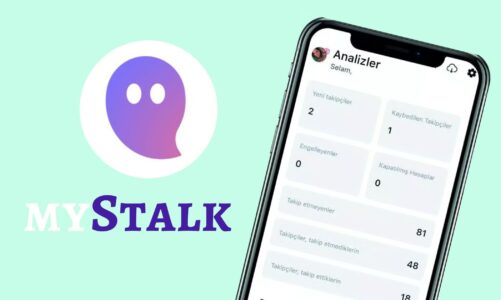Contents
A successful social media strategy starts with a clear roadmap. Understand your brand’s goals, identify your target audience, and determine the type of content that resonates with them. A well-crafted strategy aligns with your business objectives and guides your social media activities. But, why is managing social media so important?
Social media management is a multifaceted process that goes beyond posting updates on company profiles. It encompasses crafting a comprehensive strategy, creating and scheduling content, analyzing outcomes, and engaging with audiences across various platforms.
Benefits of Social Media Management for Businesses
1. Creating and Posting Social Media Content
At the heart of social media management is engaging content. Develop content that aligns with your brand’s voice and values. Whether it’s informative articles, captivating visuals, or interactive polls, diverse content keeps your audience interested. Tailor content to each platform’s unique features and audience expectations.
2. Leveraging Social Media Analytics
To measure the success of your social media efforts, analytics play a pivotal role. Key Performance Indicators (KPIs) such as engagement rate, click-through rate, and conversion rate offer insights into the effectiveness of your strategy. Utilize analytics tools to track performance, identify trends, and adapt your approach accordingly.
3. Building Community Engagement
Social media is more than a broadcasting tool; it’s a platform for building communities. Engage with your audience by responding to comments, messages, and mentions. Foster discussions, encourage user-generated content, and participate in relevant conversations within your industry.
Why Is Social Media Management Important?
Managing social media is not just about maintaining an online presence; it’s about actively participating in the digital conversation. Here’s why it’s crucial for businesses:
Platforms as Free Marketing Tools
Social media platforms offer a cost-effective way to market products and services. With the right strategy, businesses can reach a vast audience without significant financial investment.
Amplifying Brand Visibility and Engagement
Active social media management increases brand visibility. Regularly posting relevant content and engaging with your audience boosts brand recall and loyalty.
Negative Impact of Inactive Profiles
An inactive or poorly managed social media profile can harm your brand’s reputation. Customers expect timely responses and engaging content. Failing to deliver can result in a loss of trust and credibility.
Types of Content You Should Consider
Diversifying your content is essential for maintaining audience interest. Consider these content types for your social media strategy:
Diversifying Content Types
– Text-Based Content: Engaging articles, blog posts, and thought leadership pieces.
– Visual Content: High-quality images, infographics, and memes.
– Video Content: Tutorials, product demonstrations, behind-the-scenes footage, and live streams.
– User-Generated Content: Encourage your audience to create content related to your brand.
User-Generated Content
Harness the power of your community by encouraging user-generated content. This not only provides authentic endorsements but also strengthens the bond between your brand and its audience.
Visual Storytelling
Craft a narrative that resonates with your audience through visual storytelling. Use compelling visuals, consistent branding, and relatable stories to create an emotional connection.
Embracing Trends and Challenges
Stay current with industry trends and social media challenges. Participate in relevant trends to showcase your brand’s personality and increase visibility.
How to Engage Your Audience Effectively on Social Media
Building an engaged community requires proactive efforts. Here’s how you can foster audience engagement:
Building Community Engagement
Create a sense of belonging by building a community around your brand. Respond to comments, ask questions, and foster discussions to encourage audience participation.
Responding to Comments and Messages
Engage with your audience by responding promptly to comments and direct messages. This demonstrates that your brand values customer input and is actively listening.
Encouraging User Participation
Encourage your audience to participate in polls, quizzes, and challenges. User participation not only boosts engagement but also provides valuable insights into your audience’s preferences.
Utilizing Polls, Quizzes, and Live Features
Leverage interactive features such as polls, quizzes, and live videos to keep your audience engaged. These features encourage participation and provide real-time feedback.
Growing Your Audience on Social Media Platforms
Building a robust social media following involves a combination of strategies. Consider the following approaches:
Understanding Algorithms
Stay informed about platform algorithms to optimize your content for visibility. Each platform has its own algorithm, and understanding how they work can enhance your content’s reach.
Utilizing Paid Advertising
Paid advertising is a powerful tool for reaching a broader audience. Platforms like Facebook, Instagram, and LinkedIn offer targeted advertising options to reach specific demographics.
Collaborating with Influencers
Partnering with influencers can introduce your brand to a new audience. Choose influencers whose values align with your brand, ensuring authenticity in your collaborations.
Running Contests and Giveaways
Contests and giveaways are effective in incentivizing audience participation and attracting new followers. Ensure that the entry requirements align with your social media marketing goals.
Organizing Your Content
Organizing your content is essential for maintaining a consistent and cohesive brand image. Consider these tips:
Creating a Content Calendar
A content calendar helps you plan and schedule your content in advance. It ensures a balanced mix of promotional and informative content, preventing content fatigue.
Balancing Promotional and Informative Content
While promotional content is essential, balance is key. Provide valuable and informative content to position your brand as an authority in your industry.
Implementing a Posting Schedule
Consistency is crucial in social media management. Implement a posting schedule that aligns with your audience’s peak activity times for optimal visibility.
Note: If you want to make you content creation process effective, leverage a social media sentiment analysis tool. It can help in understanding sentiments, content creators can adjust their messaging, tone, and style to resonate better with the intended emotions of the audience.
Paid Advertising
Paid advertising on social media platforms offers a targeted approach to reach specific demographics. Consider the following when delving into paid advertising:
Introduction to Paid Advertising
Paid advertising involves promoting your content to a specific audience by paying for increased visibility. It is a powerful tool for reaching a broader audience and achieving specific marketing objectives.
Social Media Advertising Platforms
Each social media platform offers its own advertising options. Familiarize yourself with the advertising platforms on Facebook, Instagram, LinkedIn, Twitter, and other platforms to choose the best fit for your goals.
Targeting Strategies
Optimize your targeting to reach the most relevant audience for your brand. Consider factors such as demographics, interests, and online behavior when defining your target audience.
Conclusion
Mastering social media management is essential for unlocking your brand’s full digital potential. From crafting strategies to engaging audiences, leveraging analytics, and diversifying content, active participation is key. Social media isn’t just a marketing tool; it’s a dynamic community-building platform. Inactive profiles can harm your brand, emphasizing the importance of consistent engagement.
Diversify content with user-generated content, visual storytelling, and staying current with trends. Growing your audience involves strategic paid advertising, influencer collaborations, and organized content calendars. Social media management is an ongoing journey requiring adaptability and a deep understanding of your audience. Implementing these strategies ensures not just survival but thriving in the dynamic digital landscape.




